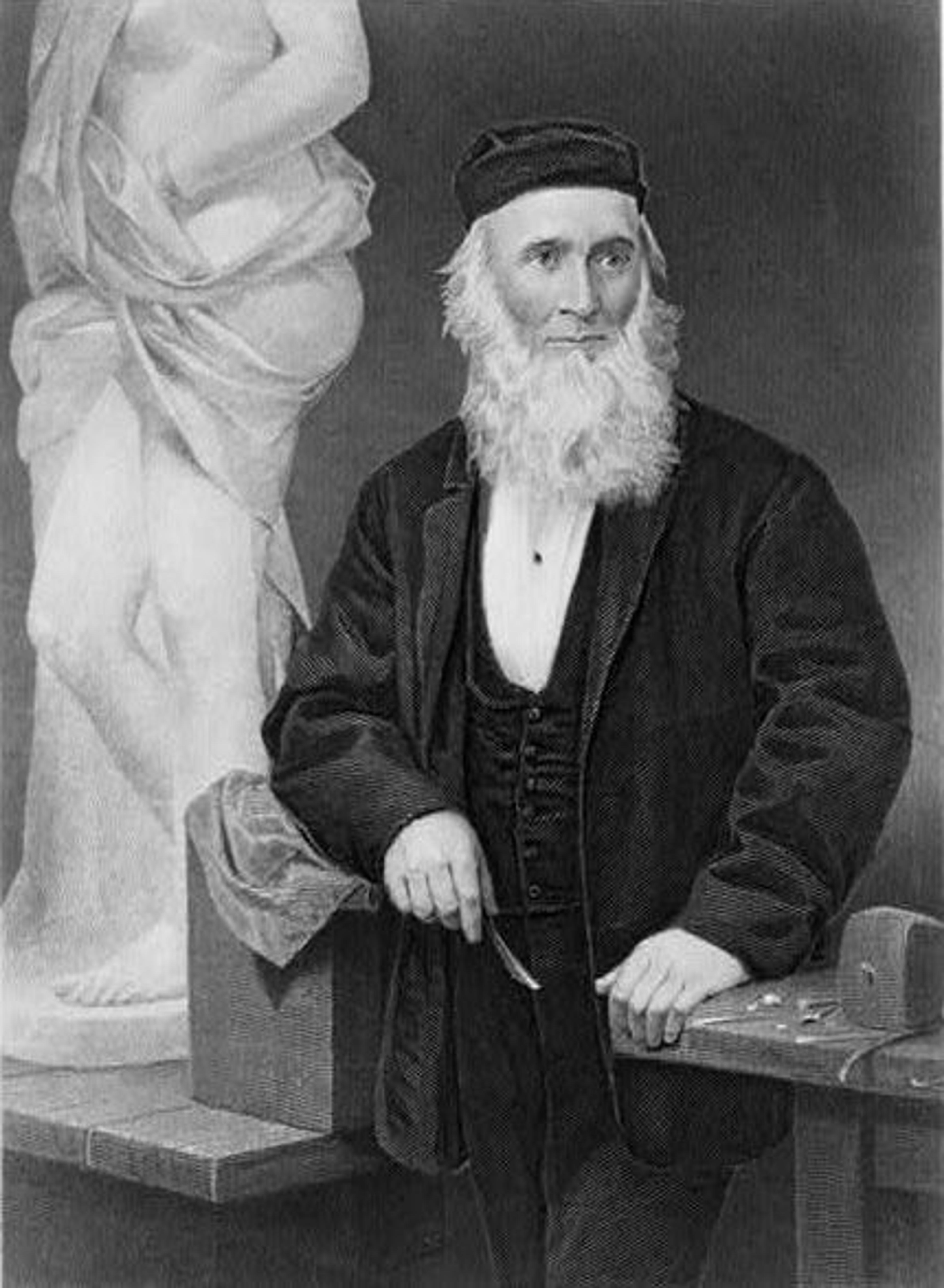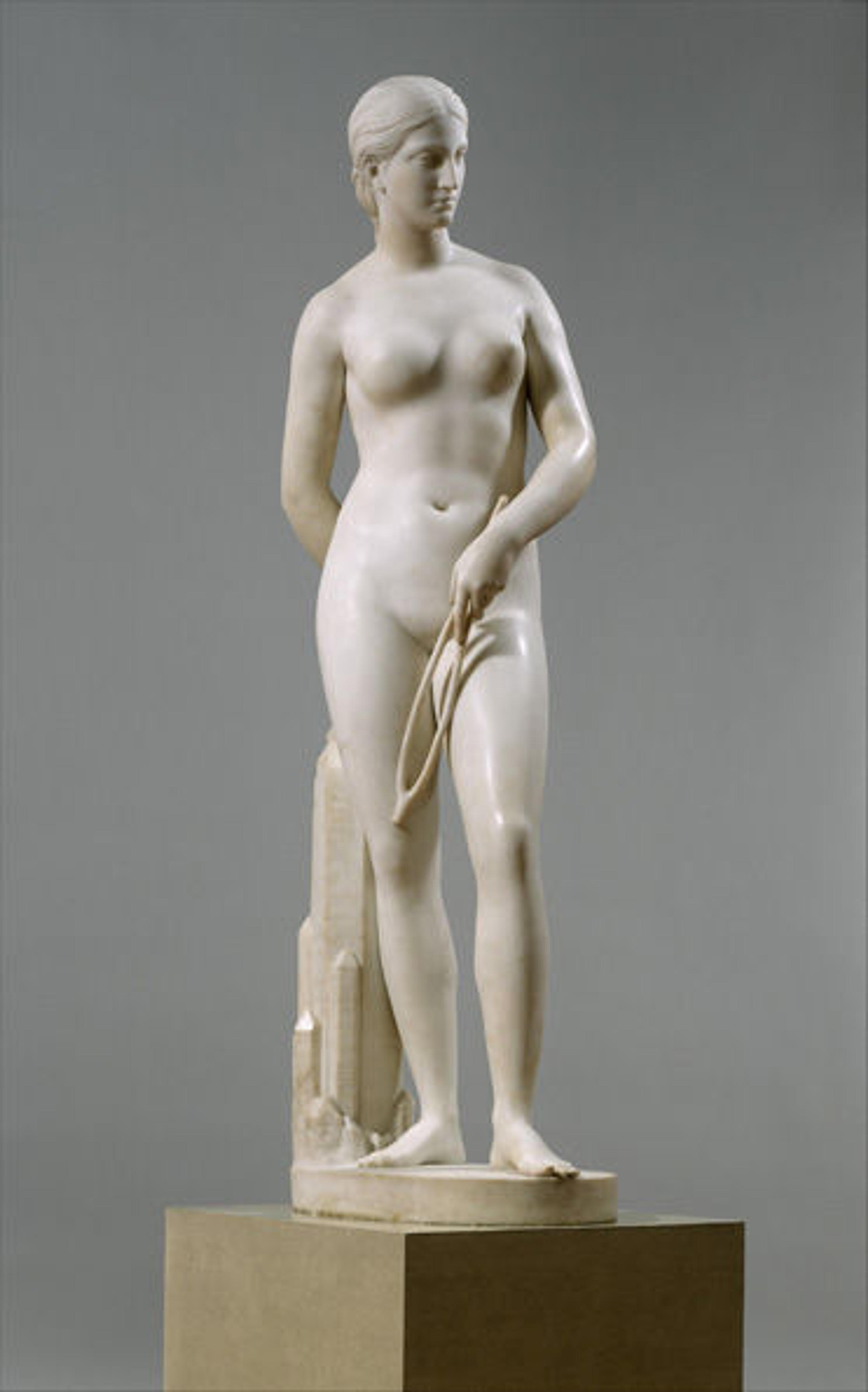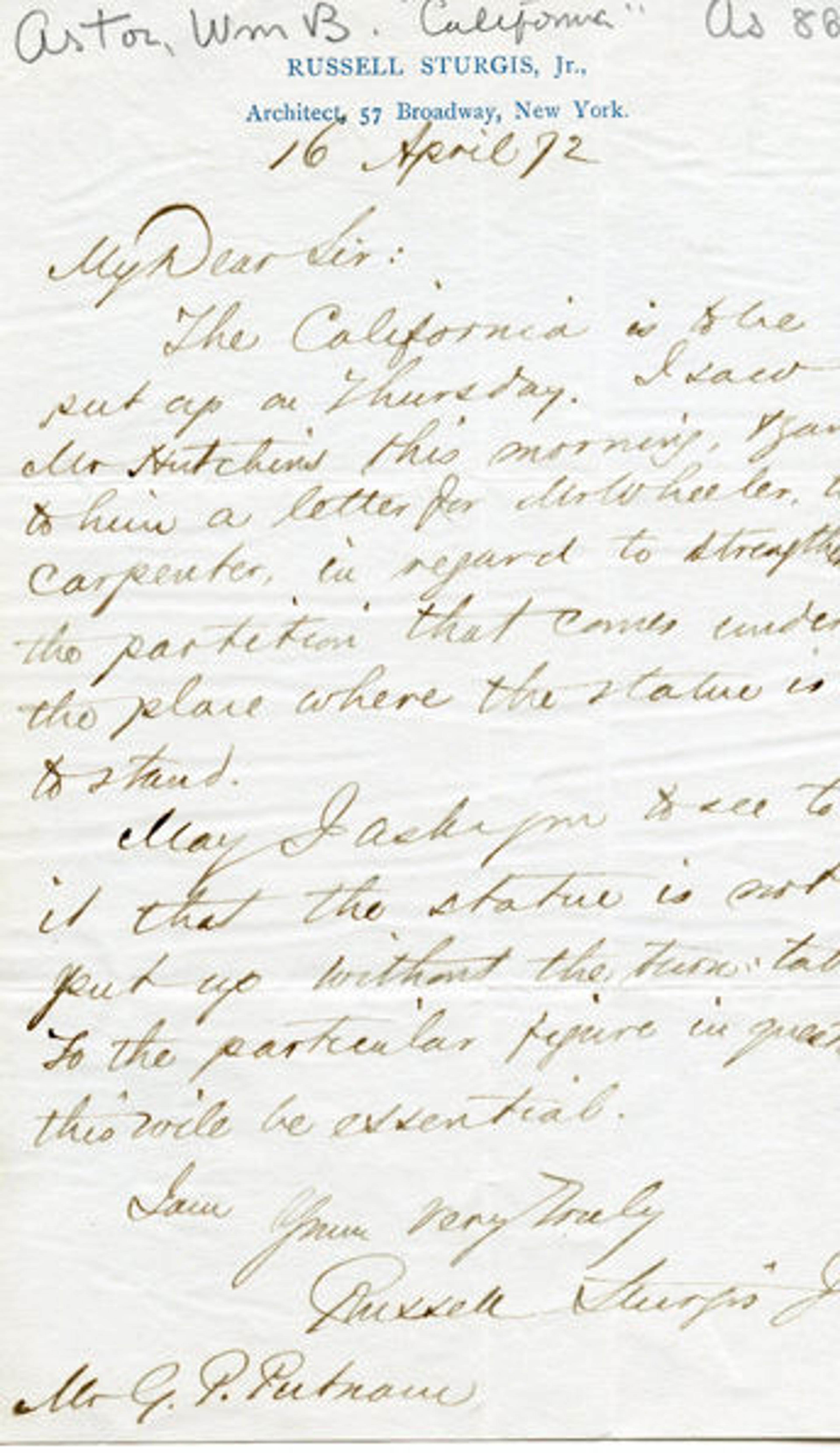
William B. Astor (1792–1875) by George A Baker (1821–1880). Oil on canvas, 1872. Gift of the Partnership for New York City, Inc. NYSM 2003.41.67. From the New York State Education Department. Historical Collections: The New York Chamber of Commerce Portrait Collection. Internet. Available from www.nysm.nysed.gov/research_collections/collections/history/nycc/preview/H-2003.41.71_baker_astor.html; accessed November 19, 2012
«One hundred and thirty-seven years ago this weekend, on November 24, 1875, the American businessman and philanthropist William Backhouse Astor died. Just three years earlier, Astor had been responsible for a milestone in Metropolitan Museum of Art history: donating to the newly established institution its first work of art made by an American, the marble statue California by Hiram Powers.»
The story of the Astors, one of the wealthiest and most iconic families associated with New York, began with John Jacob Astor, who moved to the city following the end of the Revolutionary War and established a highly successful fur trading business. At the time of his death in 1848, he was reportedly the wealthiest man in the country. Astor was also a great philanthropist, as were his descendants, several of whom became early supporters of The Metropolitan Museum of Art. John Jacob Astor III (1822–1890) contributed $1,000 to the Met shortly after its founding in 1870, and William Waldorf Astor (1848–1919) served as a Museum Trustee from 1876 to 1882.
In 1872 the Museum opened its first gallery in temporary space at 681 Fifth Avenue, a building that used to house Allen Dodworth's Dancing Academy (see "This Weekend in Met History: February 20"). The opening of this first tangible exhibition space may have been what prompted William Backhouse Astor to give California to the Museum a few months later.

Hiram Powers, engraving from a portrait by Alonzo Chappel, Library of Congress, Prints and Photographs Division
Hiram Powers, a Vermont-born sculptor, began the allegorical statue California in 1850, the year that California became a state. Inspired by the gold rush that began in 1848, the statue was initially envisioned as a young, simply dressed Native American woman. In the end, however, Powers decided to depict the woman nude. One of the first people to comment publicly on the statue was President Smith of Marietta College, who wrote:
Here stood the California, of which I had never heard, a most graceful female figure, allegorizing the seductions of gold. In her left hand she holds before her a divining rod, pointing to the auriferous earth, and in her right, half concealed behind her, a scourge of thorns, so often destined to lacerate those who say, like the son of Hassan, "Let me be suddenly rich." The allegory is perfect. The divining rod! How often have its pretentious indications baulked the hopes which they have raised. The thorns! They are only half concealed, and the keen and prudent eye of Reason, which sees "behind and before," would surely detect them; yet how many have they deeply and fatally wounded whom the passion for gold has made blind.
"Hiram Powers—New Statues," in New York Daily Times, November 25, 1852, pg.7

Hiram Powers (American, 1805–1873). California, 1850–55, carving 1858. Marble. The Metropolitan Museum of Art, New York, Gift of William Backhouse Astor, 1872 (72.3)
William B. Astor acquired the statue in 1858, installing it in his home on a custom pedestal that turned on a set of iron rollers, allowing it to be viewed from all sides. Fourteen years later, he donated the work to the Museum. Today, California is housed in the Charles Engelhard Court (Gallery 700) within the American Wing, next to the facade of Martin E. Thompson's Branch Bank of the United States (1822–24).

Letter from Russell Sturgis to William Backhouse Astor Regarding the Display of California, Office of the Secretary Records, The Metropolitan Museum of Art Archives